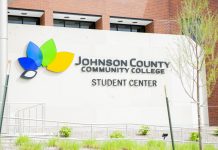By Stephen Cook
Q. Why was the amount of $3 million chosen as the minimum budget reduction amount?
A. The $3 million was arrived at because it was the amount that we’re able to make the adjustments that we need to the other parts of the budget to accomplish what we set out to do; and that was to, one, reinforce the capital line of the budget and two, to get the reserves back to where they need to be. So, by looking at that $3 million number, that’s the number that allows us to do that. A component of that, which you should be interested in would be the tuition. Historically, I think if you look back, you had tuition increases at two dollars a year, three dollars a year, four dollars a year, five dollars a year, six dollars a year, which is relatively inconsistent. So our objective was to provide some type of tuition schedule, a recommended tuition schedule over the next five years and that would include, I believe the increase was three dollars a credit hour a year for those five years. So all those different variables come together to help us accomplish what we need to do.
You’ve talked about evaluating the programs at the college; could you talk about how those would be affected? Will the scope of certain programs be reduced or would some programs be cut altogether?
You should evaluate what you do every year and it’s not that unusual, academic institutions do that and they look at their enrollments, they look whether those enrollments are trending up or down, they look at the cost involved to put on those classes and then from there they make decisions with regard to do they sustain that program? Do they invest more in it, or do they reduce it or do they eliminate it? So those are all the types of options that we’ll be looking at when we go through the evaluation process. We started doing something to that effect, I think it was several years ago when we introduced the PBS [Prioritizing the Budget Strategically] process for the budget, the objective was to review the programs.
In your email message to staff, you mentioned that, regarding evaluations, there needs to be consistency between areas, but also enough flexibility between areas, could you talk about what that means?
Well, because not everybody’s the same. Teaching an English class is a little bit different than teaching a nursing class with regard to the requirements. One program, with regard to what student service could be doing, could be different than what’s going on in the museum. We’re a very diverse campus with regard to the services that we offer, to the classes that we teach. So there needs to be some type of consistency when you evaluate, but you also have to give some flexibility to allow for the diversity in the programming.
Who is making these evaluations?
Those evaluations will hopefully be made by within the areas who are responsible for them and then that will filter upward to the cabinet; and we’ll be working with other constituencies throughout the campus to talk about this to collect information.
What kind of constituencies?
We’re hoping to get some involvement from faculty; we’re hoping to get some involvement from members of staff. Quite honestly, we haven’t really ironed that out yet. It’s still a work in progress.
At this time are there any specific programs that might be affected?
No, we haven’t even started that process. We’ve moved everything up, normally this would start, late October or November so we wanted to get an early start because we know that you need to give it as much time as you can to collect all the information.
Regarding employees, how will it be decided who stays and who goes during this time?
Well, there are so many variables that we have to look at in those programs. The challenge is [we have to evaluate positions, not individuals]. Does it really contribute to student success and does it merit the cost of investment in that and, it’s hard to do, but you try to evaluate the function and the position rather than the personality that’s involved.
For employees that might be concerned about what the future holds, what do you think they need to know?
Well, I think they should just be attentive to the process and to work toward collecting the information and the data to help evaluate their areas.
Regarding the tuition increase, how was the decision made for it to be implemented at this time?
Well, the way it works is that the administration would recommend it to the trustees, but right now I think we’re the second lowest tuition rate in the region. At the end of five years, the plan is, that per credit hour would be 100 dollars, so that’s over a five year period. I think if you start looking at other opportunities at other schools, it might already be in that neighborhood or about more. So, but the process is the administration, what they do every year, identifies what the tuition would be and then proposes that to the trustees.
What kind of feedback have you received about the proposal to increase tuition?
Haven’t received anything, yet.
Are there any reductions planned for the years after?
The objective is to do this now so we’ll be fine down the road, that’s why we’re trying to do this now and then we can start working on other things, but this is the first step in kind of making some adjustments and then hopefully we’ll never have to make adjustments down the road, but you can never say never, right? But that’s the goal.
Adjustments in regards to shrinking the budget again?
Right, but now it’s important to note that we’re not talking about shrinking the overall budget, we’re talking about focusing just on the salaries and benefits line of the budget. We’ve got three basic lines of the budget, you’ve got the salaries and benefits, you’ve got capital expenditures and you have operating expenditures. Those three comprise your operating budget. It’s a very complicated issue.
Was there anything else you’d like to add?
The budget is a very complex deal, it’s a lot of money, you’re talking about $137, $138 million so that’s a lot. There are a lot of other things that are connected to it as well and so what we’re trying to do is address the future – and we’re fine.
Contact Stephen Cook, editor-in-chief, at scook35@jccc.edu.






















